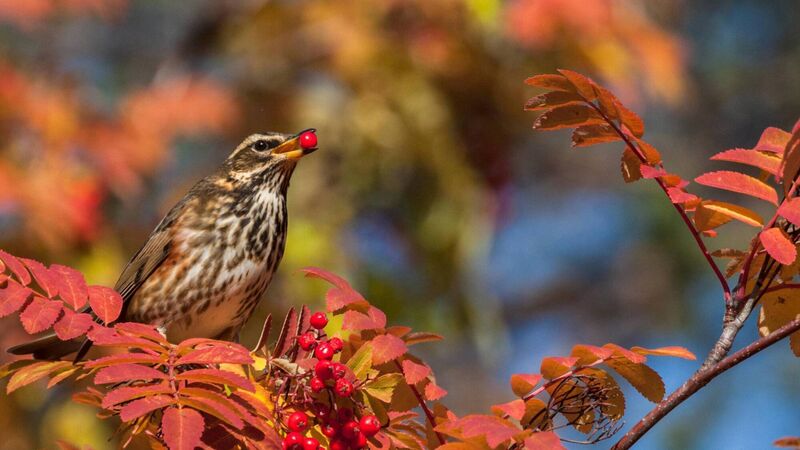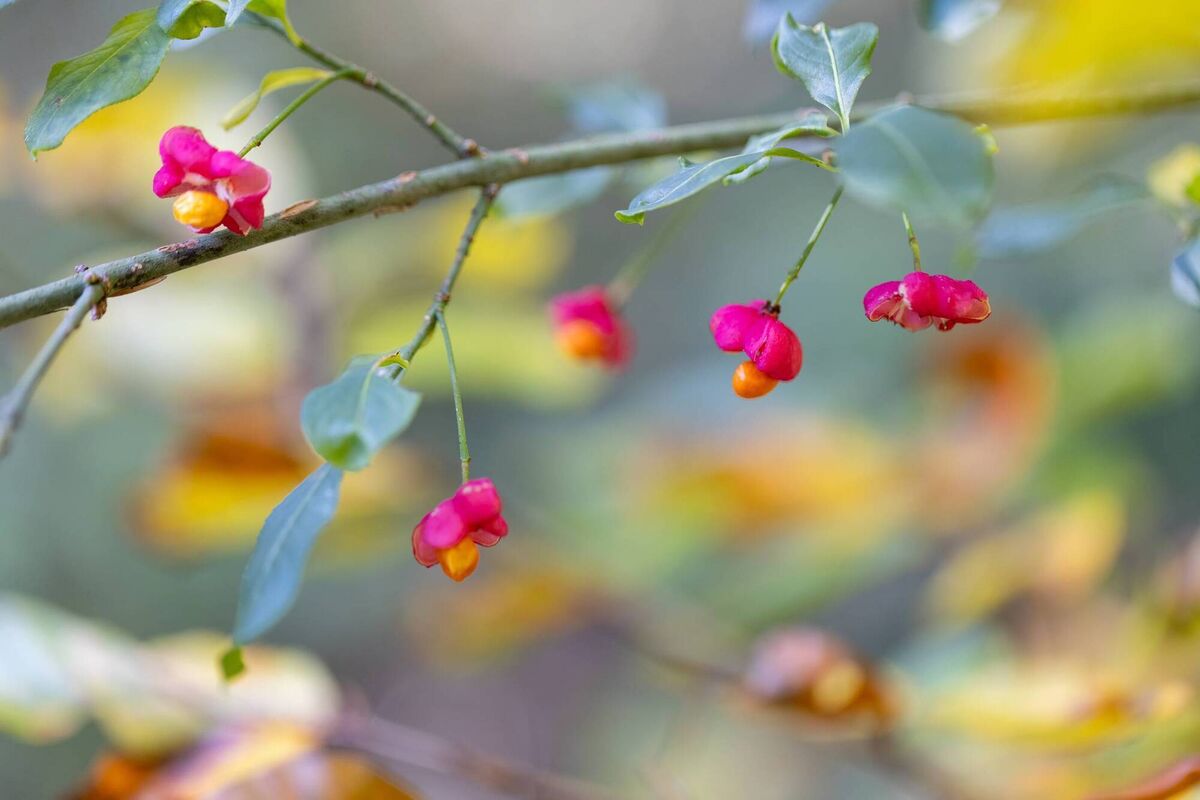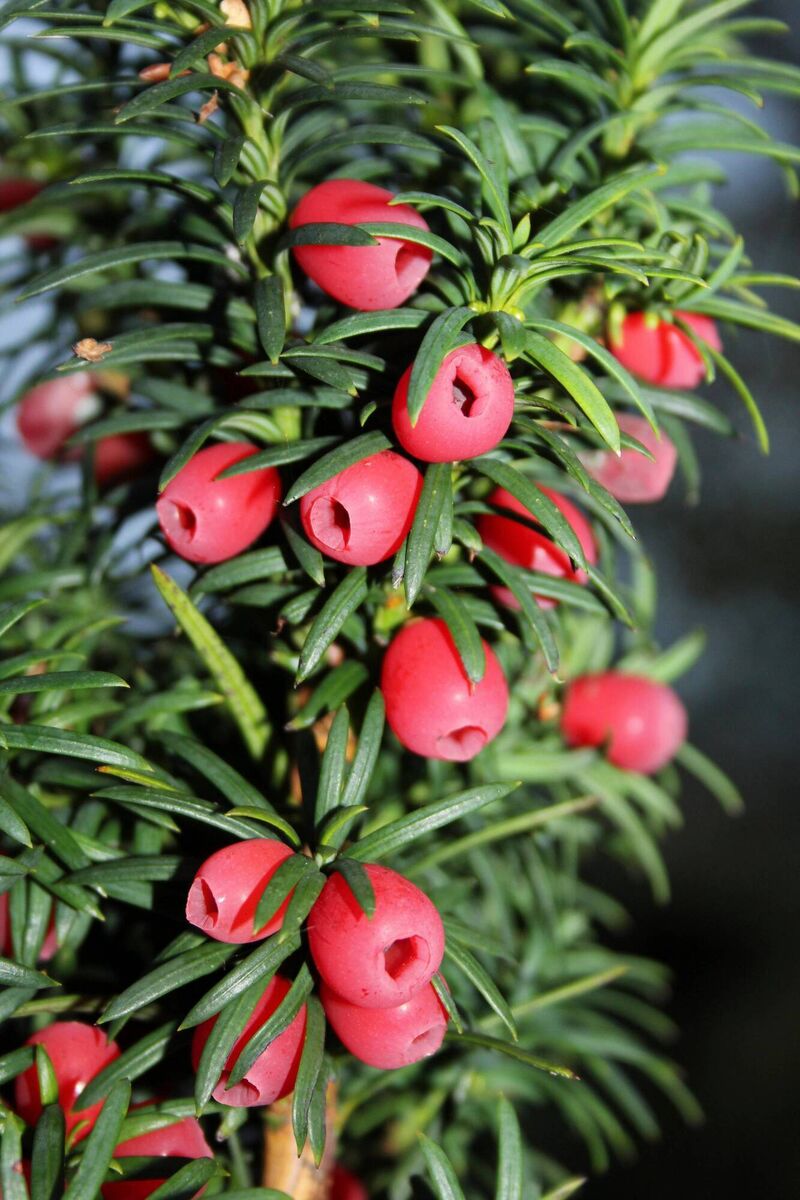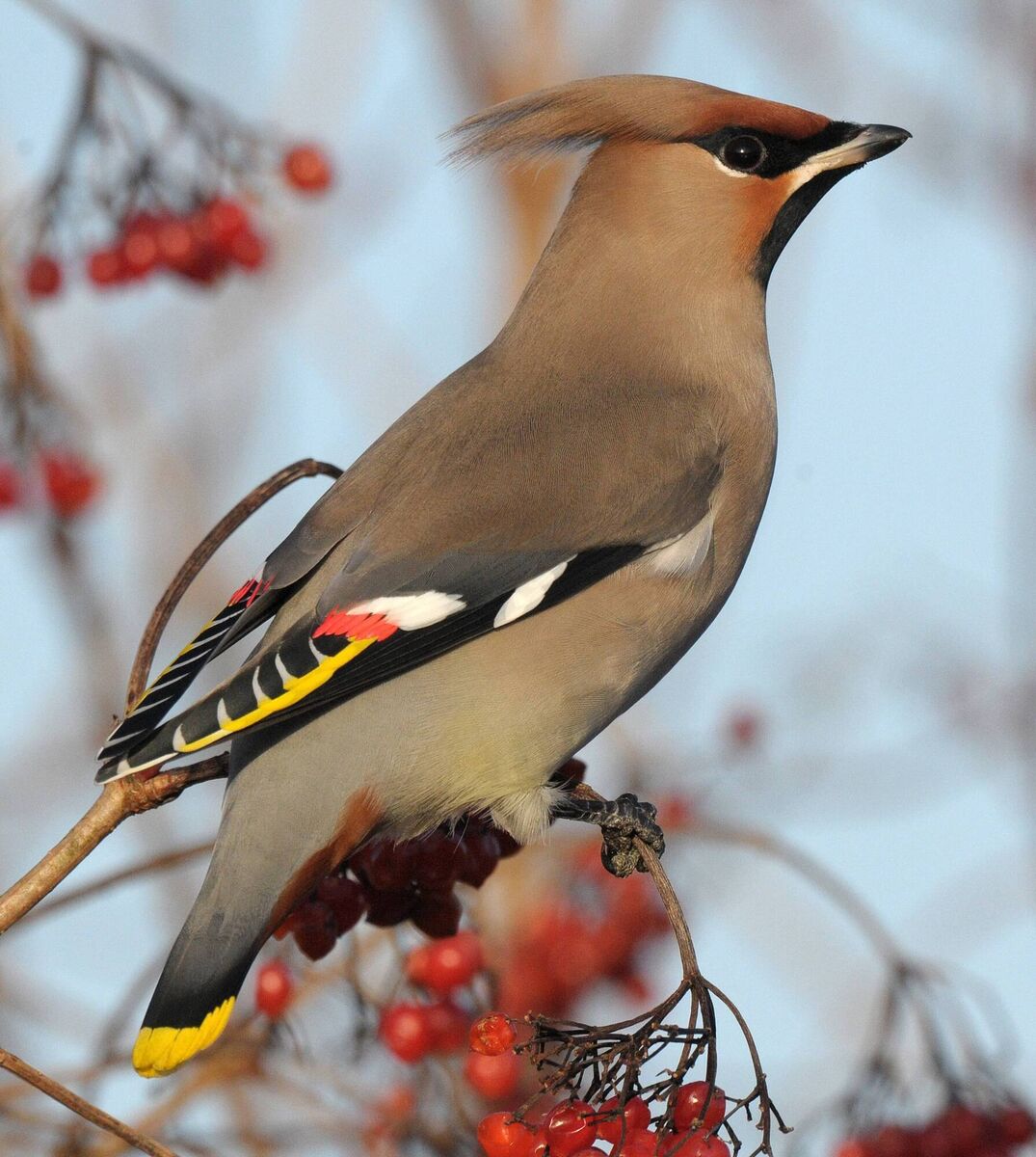Nature’s bounty of wild, native winter fruits

A fieldfare in a rowan tree. Picture: Alamy
As winter asserts itself, spindle berries are one of my favourite finds.
Their funky star-shaped pink berries stand out from scraggy hedges and woodland corners, welcome bursts of cheerful colour amid the wintery twigs and branches. Four bulbous lobes — the points of the star in cross section — each contain an orange-coloured spindle seed.

Both the fleshy berries and the solid seeds inside are poisonous to us, but are designed to be seen so that eager birds will gobble them, absorbing a little of their nutrition before passing the seeds intact.
Rowan, also known as mountain ash, is a hardy tree, equally happy in suburban gardens or growing on rocky mountain slopes. This is a species that is equipped to thrive in even the most challenging of upland terrain. In such environments, rowan's bright clusters of red and orange berries are especially valuable for wildlife in winter, where such sustenance can be hard to come in tightly grazed upland habitats.

Holly famously holds on to its fruits through the early winter. The first frosts soften the red flesh, making it more palatable for the birds to eat. Only female holly trees produce berries — though technically speaking, they aren’t called berries but 'drupes'. A drupe is where the flesh surrounds a single shell, within which are several seeds. Coffee, plums and cherries are some other familiar drupes. They are a fruit, but just not a berry.
Whitebeam is another berry-bearing native tree with a generous tendency to feed the birds, reciprocal as the arrangement might be.

Yew trees’ bright, juicy red berries are poisonous to us, but birds can eat them happily, their digestive tract being unable to break down the coating of the toxic seeds inside — a perfect ploy for the yew trees to spread their seed intact.
The birds enjoying these winter berries tend to be an adaptable lot. Blackbirds, pigeons and our regular, resident thrushes have switched from the protein-rich diet of worms and other invertebrates that nourish them though the spring and summer, with berries now making up the bulk of their winter diet. Redwings and fieldfares arrive here in October, winter migrants from Scandinavia and other northern latitudes, where they wouldn’t survive the freezing temperatures of the darkest months, relocating here to share in the bounty of wild winter berries.

Waxwings are special treat to see, a stunning little bird with a velvety grey-brown body, red stripes on their wings, a bright yellow rim to their tail, and a distinctive crest on their head. They bred in open birch and conifer forests in the far north of Scandinavia and Russia, moving south in winter and often arriving here in large flocks. Waxwings seem to have a particular fondness for rowan berries, with dozens of birds flocking to a well-endowed tree to devour the fruit — eating up to three times their own bodyweight in berries every day!
Spindle, rowan, holly, are all beautiful, hardy native trees, essential providers in the wild food chain, far better than bird feeders for many of our feathered friends. In spring and summer, they are home to a rich community of invertebrates, offering up abundant flowers for wild bees and hoverflies who need the pollen and nectar that native tree flowers provide. The caterpillars of butterflies and moths who live from their canopy leaves are a rich food source for nesting birds, along with literally hundreds of other invertebrate species that meet the protein requirements of nestlings.
When talking about wild winter berries that are crucial fodder for wildlife through winter, it would be remiss not to mention ivy. Ireland is home to two native species of ivy, one endemic to this island. Both flower during autumn and develop hard, dark berries in winter, making them especially welcome for wildlife when most other wild fruits are past their best.
Woodpigeons, thrushes, robins and blackcaps are among the many birds relying on ivy’s winter berries. The fact that ivy holds onto its leaves all winter too makes it a valuable refuge for bats, birds, and overwintering invertebrates through the months of cold and dark, when most native trees are bushes are bare.
Spindle, rowan and holly are among the most petite of native trees, beautiful and bountiful and a life-enhancing addition to any garden or green space. Flowering in spring and summer, offering up wild fruits for autumn and winter, the services they provide are for greater than their size.
This is a good time to think about planting a few extra native fruiting trees in whatever space is available... or perhaps ordering now for midwinter gifts. Be sure to source native saplings from native stock, helping to maintain the genetic diversity of native species that are best matched with the life-cycle timing of native wildlife. If you aim to maximise the benefits for wildlife, avoid ubiquitous ornamental trees and exotic cultivars, many of which come from mass-produced stock in continental nurseries.
Best of all, collect up wild rowan, whitebeam, spindle, and other tree seeds for planting yourself — some will germinate in pots or seed trays and, with the right care, can be ready for planting out in a few years' time.
This is a relatively easy way to create a store of saplings for beginner-level rewilding.
Perhaps it’s enough to simply enjoy the sight of these wild winter fruits, or allow the trees that bear them to self-seed wherever they may choose. Maybe you have a garden that can fit a few more native trees. Collecting up seeds and propagating a few new saplings could be the best way for you to contribute to much needed native tree cover.
Or maybe you’re able to go a bit further and work to rewild a piece of land. Each act that means more native trees is a worthwhile exercise in being a good ancestor.






